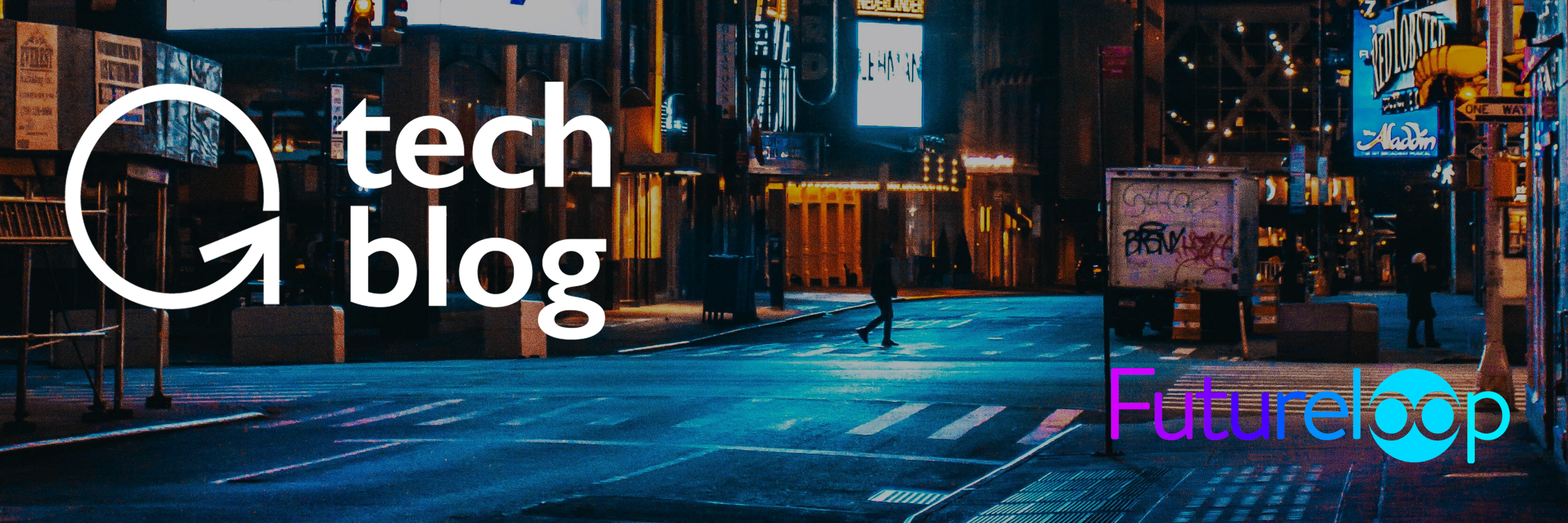
In this week’s Abundance Insider: Improbable's pandemic simulation tech, computational models for understanding COVID-19 infection, and urban disinfection robots.
P.S. Send any tips to our team by clicking here, and send your friends and family to this link to subscribe to Abundance Insider.
P.P.S. Want to learn more about exponential technologies and home in on your MTP/ Moonshot? Abundance Digital, a Singularity University Program, includes 100+ hours of coursework and video archives for entrepreneurs like you. Keep up to date on exponential news and get feedback on your boldest ideas from an experienced, supportive community. Click here to learn more and sign up.
Share Abundance Insider on Facebook | Twitter | LinkedIn | Know someone who would benefit from getting Abundance Insider? Send them to this link to sign up.
Improbable’s simulation tech could help us build better pandemic models

What it is: British unicorn Improbable, which specializes in simulation and gaming technology, has been recruited to help with the UK government’s efforts to combat COVID-19. Their SpatialOS platform, which creates simulations of entire worlds, is typically used for gaming. However, as CEO Joe Robinson states, “We combine scientific modeling, artificial intelligence, and data analytics to create, essentially, a platform orientated towards the simulation of real-world environments.” The firm’s specialty is agent-based modeling, which involves models for each individual element in an environment, whether that be a civilian, inanimate object, car, business, or power plant. Such models can assist in understanding urban mobility, vehicle traffic, or even crime patterns in specific areas.
Why it’s important: Accurate epidemic modeling simulations are critical to the UK’s policy response to COVID-19. According to Joe Robinson, “The aim [...] is to improve decision-making and increase the effectiveness of the whole of a government’s preparedness activities whilst also drastically reducing the cost.” Improbable’s agent-based models allow for additional flexibility that eludes other forms of modeling, which often break parts of the problem into distinct, siloed models. As explained by Improbable principal scientist Christoforos Anagnostopolous, “In a pandemic, you [want] to couple together a model of the outbreak itself – the infection, the epidemiological model – with a model of the economic impact on small businesses, as well as possibly a behavioral model of compliance.” By tweaking simulations to account for individual behavior under pandemic conditions, these models can help predict mass behavioral patterns and thereby inform proactive policy decisions.
NASA CO2 Conversion Challenge Competitor Helps Covid-19 Efforts
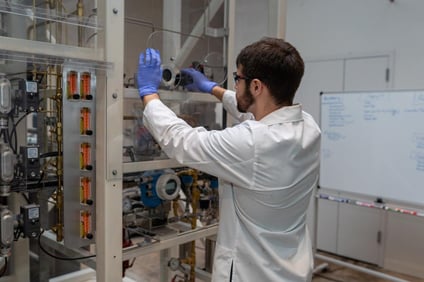
What it is: Air Co., a Brooklyn-based startup competing in NASA’s CO2 Conversion Challenge, is using its technology to produce hand sanitizer. The technology’s original purpose was to convert carbon dioxide into simple sugars (such as glucose) that could then be used for mission-critical products like plastic, food, and medicine. Air Co.’s conversion process involves combining CO2 with water, after which the extra hydrogen (resulting from a water molecule’s division into hydrogen and oxygen) bonds with the carbon dioxide, producing the carbon-negative alcohol utilized in hand sanitizer.
Why it’s important: Now in short supply across COVID-19 hotspots worldwide, hand sanitizer is particularly crucial for healthcare workers, and in dire need of scaled up production. Now in partnership with packaging and labeling firms, Air Co. is currently working to produce up to 2,000 two-ounce bottles of hand sanitizer every week. Members of the NASA community champion Air Co.’s major pivot towards its technology’s terrestrial benefits, viewing these applications as paramount to NASA’s mission. As stated by Walt Engelund, deputy associate administrator for programs within NASA’s Space Technology Mission Directorate, “This is one example of how NASA challenges spur innovation to help life on Earth and beyond. We catalyze a culture of change makers and problem solvers, many of whom go on to apply their technology and creativity to make a difference in their own communities and around the world.”
Researchers working on computational models to design ways to treat COVID-19
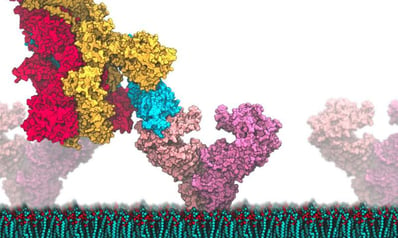
What it is: Researchers at Stony Brook University are collaborating with Brookhaven National Laboratory and Argonne National Laboratory on computational models of the novel coronavirus. Of particular interest is the “spike” protein positioned on the surface of the virus. This protein is responsible for binding to human cells within the respiratory system, after which it initiates the process of infection. As a result, the “spike” protein is also the primary target of any potential treatments under development and antibodies that fight infection and provide immunity.
Why it’s important: While scientists have captured images of the spike protein (at atomic-level detail), current experimental data do not offer a full picture of how the protein changes its shape to attach and gain entry to human cells. “You may know that your car door is the way you can get in and out of a car, but if you've only seen the door in a picture and have never watched someone actually open a door, you don't really know how it works,” explains Carlos Simmerling, professor of quantitative and physical biology at Stony Brook University. By developing detailed computer models that illustrate the protein’s process, Simmerling and his team aim to better understand what small molecule drugs could be effective in blocking the spike protein’s interaction with human cell surface molecules. As posed by Simmerling, one of the most important questions for drug development involves “places on the spike away from [its] contact point [with human cells] that could act like keys, where scientists might be able to make a small molecule that would bind to it and lock it closed.”
With Hi-Tech Japanese Machines, Delhi Begins Sanitising Coronavirus Hotspots
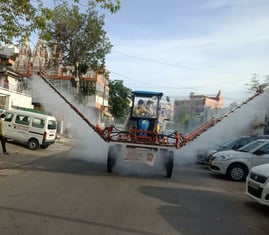
What it is: Under the Delhi government’s “Operation SHIELD,” 60 sanitization machines—including ten from Japan—were deployed in high-risk areas of the nation’s capital. The Japanese machines, which can adjust in length to fit in narrow lanes, spray sodium hypochlorite solution on surroundings. According to the World Health Organization (WHO), this chemical can disinfect surfaces within a minute of application and should be used at a concentration of 5000 ppm. In the city’s Dilshad Garden region, which was previously declared a hotspot, no new cases have been reported in the last ten days, likely in part due to this sanitization effort.
Why it’s important: As COVID-19 cases in Delhi surpass 1,176, only 27 people have been cured and 24 have died. Rapid, widespread sanitization efforts in dense communities like Delhi could prove essential in halting the spread of the virus. These cleaning “drive-throughs” offer a low-cost solution that could aid in disease containment efforts without exposing human workers in the process.
UW-Madison researchers tracking travel, social media to help contain virus
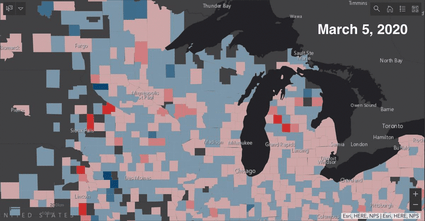
What it is: UW-Madison professor Song Gao is leading an effort to track human movement in hopes of understanding the effectiveness of physical distancing orders. Gao’s Geospatial Data Science Lab is collecting anonymized data pooled from hundreds of thousands of cell phones to identify how much people move, from the national to district level. The researchers have acquired this data through a partnership with SafeGraph and have now made their findings publicly available on the lab’s website. In Dane County, for instance, Gao’s lab found that half of over 6,000 cell phones sampled on a daily basis moved less than 0.1km, compared to a median distance of over 6km in early March prior to travel restrictions. The researchers plan to incorporate social media data to better understand how travel changes correlate with communication channels.
Why it’s important: Understanding how people respond to a variety of public announcements and restrictions could better inform future public health efforts to contain COVID-19. As Gao’s team attempts to quantify the effects of physical distancing orders, tech giants like Apple and Google plan to soon implement contact-tracing to curb the spread of the virus. The Apple-Google system, announced three weeks ago, aims to notify individuals potentially at risk of infection after they unknowingly contact someone with the virus. Ultimately, the goal is to limit the number of quarantined individuals and reintegrate more people into the workforce.
FDA clears N95 decontamination process that could clean up to 4 million masks per day
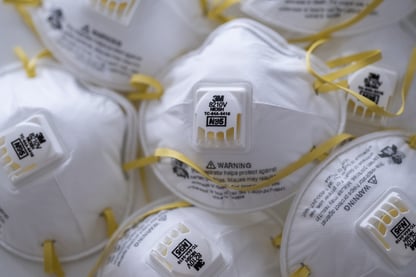
What it is: N95 respirators can now be sterilized for reuse thanks to a decontamination process provided by the company Advanced Sterilization Products (ASP). ASP’s STERRAD series sterilization machines use vaporized hydrogen peroxide gas to clean medical equipment in around 6,300 hospitals across the U.S. already. Now, they will be repurposed to clean N95 masks. Given the current deployment of over 9,930 machines across the nation, ASP’s arsenal in aggregate could sterilize up to 4 million masks each day. Under the FDA’s emergency use authorization (EUA), these machines will therefore work to make N95 masks reusable, adding to similar sterilization efforts by lab management company Batelle, already implemented by the FDA.
Why it’s important: Although these sterilization efforts fall under EUA orders, their use case may be far more long-term. To prepare for future pandemics and potential resurgences of COVID-19, our health systems must be equipped to operate with reusable protective gear that requires continuous sterilization. Sanitization has already expanded beyond just the realm of medical equipment and will continue to impact our lives. From smartphone showers to metro wipe downs, rapid and autonomous disinfection systems will begin to emerge everywhere.
Want more conversations like this?
Join FutureLoop: Over the past 2 years, I’ve built a machine-learning algorithm that scrapes the world’s news, science journals and social feeds every day to understand how exponential technologies are impacting specific topics & industries. It’s called FutureLoop. I was getting ready to share it publicly, but the current crisis has changed my plans.
Last week, I launched "FutureLoop Pandemic Special Edition," a daily comprehensive update on the impact of exponential technologies (AI, Robotics, Drones, Cellular Medicine, CRISPR, Networks & Sensors) on the COVID-19 pandemic.
If you participate, FutureLoop will update you every day on the latest breakthroughs in detection, prevention & cure of the COVID-19. This product is still in Beta, but it’s powerful, high-quality info, and it's free.
Your mindset is your most important tool during this pandemic. Making sure you are consuming the right information is critical to maintaining that mindset. FutureLoop offers "Data-Driven Optimism."
You can subscribe here. It’s free, fun + fast (20 seconds).
Share Abundance Insider on Facebook | Twitter | LinkedIn | Know someone who would benefit from getting Abundance Insider? Send them to this link to sign up.
Topics: Abundance Insider



